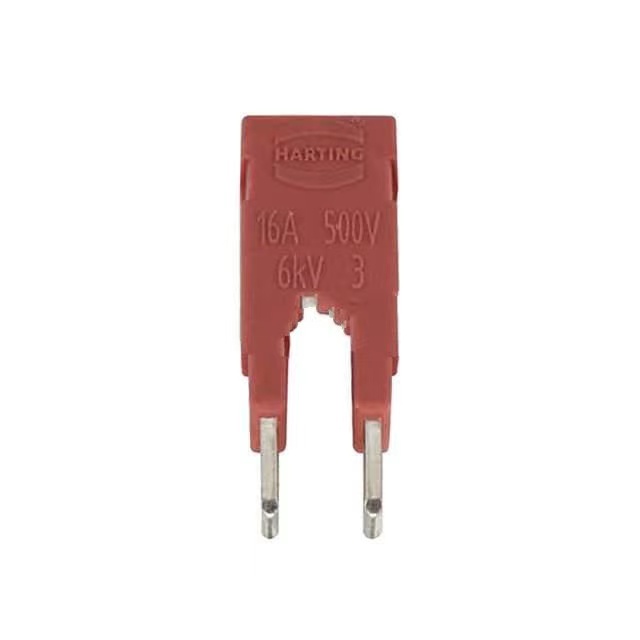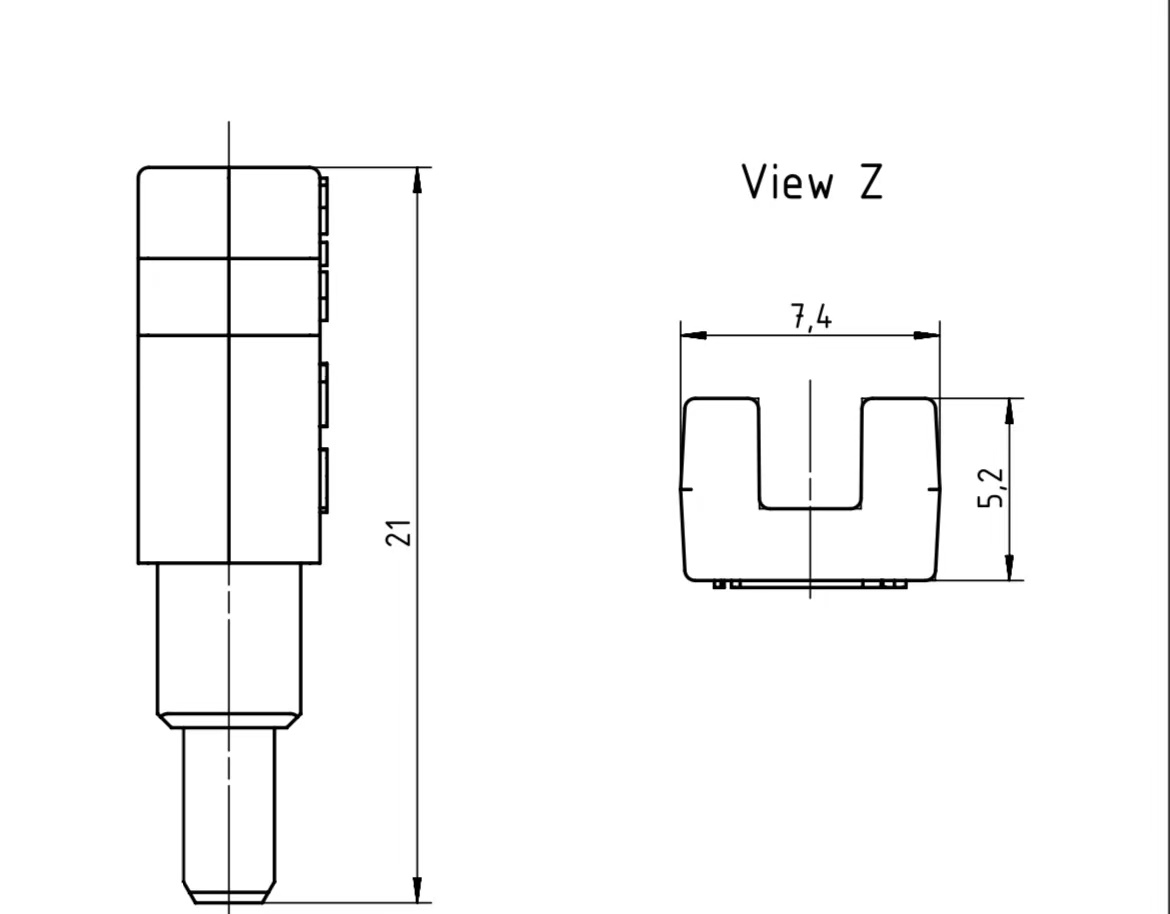What is a jumper in electronics?

What is a jumper?
The jumper is actually a metal cable connecting the two demand points of the circuit board (PCB). Due to the different product design, the jumper uses different materials and thickness. Most jumpers are used for equal potential voltage transmission, and there are also reference voltages used to protect circuits. For precision voltage requirements, the voltage drop generated by a little metal jumper will also have a great impact on product performance.
What is the structure of the jumper?
The structure of the jumper is mainly composed of two parts: one part is fixed on the motherboard, hard disk and other equipment, and is composed of two or more metal jumper needles; the other part is the jumper cap, which is a movable part. The outer layer is insulated plastic, and the inner layer is a conductive material, which can be inserted into the jumper needle.
When the jumper cap is buckled on two jumper needles, they are connected and the current passes through, which we call ON; conversely, when the jumper cap is not buckled, it means that it is disconnected, which is called OFF. This structure allows users to adjust the on-off relationship of different electrical signals on the device by simply moving the position of the jumper cap, and adjust the working status of the device, such as determining the motherboard voltage, the master-slave relationship of the driver, etc.

What are the types of jumpers?
Resistance jumper:The resistance jumper is to connect two components or two circuits by installing a certain resistance. This method can play a certain role in separating and stabilizing the signal, but we need to pay attention to the resistance value of the resistance and the design of the circuit.
Solder jumper:
Solder jumpers are connected by adding or cutting the pins of components between the pins of the components to the PCB board. This method is relatively simple, but attention should be paid to the quality and strength of welding, as well as the interference and impact with other circuits.
Copper wire jumper:
Copper wire jumper is a traditional jumper method, which uses copper wire as the main transmission medium. It has the advantages of fast transmission speed and relatively low cost, which is suitable for short-distance, low-speed and relatively stable transmission needs. Copper jumpers are usually used in TV systems, telephone lines, etc.
Optical fiber jumper:
Optical fiber jumpers use optical fiber as the transmission medium, which has the characteristics of high speed, low loss and strong anti-interference ability. It is suitable for places that require high-speed transmission, such as data centers, radio and television systems, etc.
Coaxial cable jumper:
Coaxial cable jumper uses coaxial cable as the main transmission medium, which is suitable for high-frequency transmission and has the characteristics of long transmission distance and strong anti-interference ability. Coaxial cables are generally used in computer networks, digital TV and other fields.
In addition, there are computer board jumpers, optical fiber jumpers, network jumpers, etc.
What is the function of the jumper?
The role of jumpers in PCB design and circuit layout is very important. Specifically, the role of jumpers mainly includes the following aspects:
1. Connection circuit: The jumper can connect a variety of complex circuits, including chips, resistors, capacitors and inductors.
2. Play the role of separation: In high-power circuits, jumpers can play a separation role, avoid signal interference, and improve the stability and performance of the circuit.
Improve reliability: The use of jumpers can improve reliability and stability and reduce the failure rate in circuit design.
What are the advantages of jumpers?
1. Strong flexibility: Jumper products can be selected and replaced according to different equipment and scenarios, ensuring the flexibility and maintainability of communication equipment.
2. Convenient installation: Jumper products adopt plug-in connection, which is convenient and fast to install and disassemble, which can greatly shorten the debugging time and workload of the equipment.
Application of jumpers
Jumpers are widely used in a wide range of applications, including but not limited to communication rooms, optical fiber-to-home, local area networks, optical fiber sensors, optical fiber communication systems, optical fiber connection transmission equipment, national defense combat readiness and other fields.Communication computer room: The jumper plays an indispensable role in the communication computer room. It is used to connect optical fiber distribution frames, optical modules, optical fiber transceivers and other equipment to ensure the effective transmission of signals.
Optical fiber to the household: In the optical fiber to the household project, the jumper is used to connect the optical fiber fiber distribution box, optical fiber terminal box, optical fiber transceiver and other equipment to realize the entry of optical fiber signal.
Local area network: Jumper is a common connector in the local area network. It is used to connect optical fiber switches, optical fiber routers, optical fiber network cards and other equipment, and supports data transmission in the local area network.
Optical fiber sensor: In the application of optical fiber sensor, the jumper is used to connect optical fiber sensor and optical fiber signal processing equipment to realize signal detection and transmission.
Optical fiber communication system: The jumper is used in the optical fiber communication system to connect optical fiber amplifiers, optical fiber wavelength division multiplexers and other equipment to support high-speed data transmission.
Optical fiber connection transmission equipment: The jumper is used to connect optical fiber transceivers, optical fiber modems, etc. in the optical fiber connection transmission equipment to ensure the stable transmission of the signal.
National defense preparedness: The jumper is used to connect optical fiber communication equipment, optical fiber radar, etc. in national defense combat readiness to support the confidentiality and stability of military communications.
What is the difference between fiber jumper and copper jumper?
A、Transmission distance.The maximum transmission distance of the optical fiber jumper can reach 100km (single-mode optical fiber), which far exceeds the transmission distance of the copper cable, which generally does not exceed 100m.
The maximum transmission rate of the optical fiber jumper can reach 100Gbps, while the maximum transmission rate of the copper cable jumper can reach 40Gbps. Therefore, the optical fiber jumper also has obvious advantages in terms of transmission rate.
The operation requirements such as shear welding and equipment connection of optical fiber jumpers are relatively high, and the operation is relatively complicated, while the crystal head production of copper cable and the port connection of equipment are relatively simple.
D、price cost.
The price of optical fiber jumper is generally 5 to 6 times the price of copper wire, and the price of optical fiber plug-inging equipment (such as optical fiber coupler, etc.) is also much higher than that of copper wire. Therefore, copper jumper has more advantages in terms of price cost.
Optical fiber jumpers are not affected by electromagnetic interference and can work stably in an electromagnetic interference environment, while copper cables are easily affected by electromagnetic interference, which may lead to a decline in signal quality.
Optical fiber transmission is not easy to be eavesdropped, because it does not release electromagnetic energy and is relatively safer.
The delay difference between optical fiber and copper wire is transmitted faster in copper wire. However, under the long-distance requirements, less signal processing and repeated processing are required, the optical fiber delay is low, the copper wire is vulnerable to external interference, the loss is large, and the delay is large.
How to choose the right jumper?
1. Determine the application scenario: it is necessary to clarify which application scenario the jumper will be used for. For example, if you need to connect Ethernet devices, you should choose a twisted pair jumper; if it is used to connect optical modules, you should choose an optical fiber jumper.
Select the appropriate connector type: Select the appropriate connector according to the port type of the connecting device. For example, if the ports of both devices are the same, LC-LC, SC-SC or MPO-MPO jumpers can be used; if different port types of devices are connected, LC-SC, LC-ST or LC-FC jumpers may be more suitable.
2. Select single-mode or multi-mode optical fiber: select single-mode or multi-mode optical fiber jumper according to the data transmission distance. Single-mode optical fiber is suitable for long-distance transmission, while multi-mode optical fiber is mainly used for short-distance transmission.
Choose single or dual fiber: choose single or double fiber jumper according to whether you need a two-way BIDI optical module or ordinary optical module. The single fiber jumper has only one optical cable, while the double optical fiber jumper has two optical fibers side by side.
3. Choose the appropriate optical fiber jumper sheath: choose the appropriate sheath material according to the use environment, such as PVC, LSZH, OFNP or armored sheath. For example, LSZH sheath has good environmental protection and flame retardant performance, while OFNP sheath is suitable for large data centers.
4. Consider cable quality: choose a good quality network jumper to ensure the stability and reliability of the network.
5. Size: Jumper size is one of the key factors when choosing jumper products. The size includes the length, width and height of the jumper, which needs to be selected according to the size of the electronic components in the actual application. Different electronic component sizes need to match different sizes of jumpers.
6. Parameters: Parameters include voltage, current and frequency, and the appropriate jumper needs to be selected according to the actual parameters of electronic components. When selecting the jumper, it is necessary to determine the working voltage, current intensity, frequency range and other parameters of the components, and then select the corresponding jumper products to meet the needs.
How to use the jumper correctly?
1. The length and connection of the jumper should be as concise and clear as possible, and should not be long or curly.2. The position and width of the jumper should be reasonable and should not affect the normal operation of other circuits.
3. The connection mode of the jumper should be properly grounded to ensure the normal operation of the circuit.
4. The welding of jumpers should be firm and reliable to ensure the stability and reliability of the circuit.







